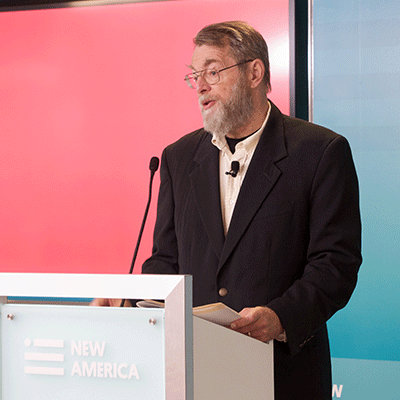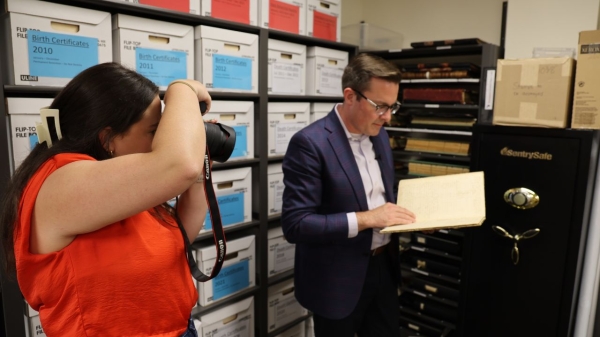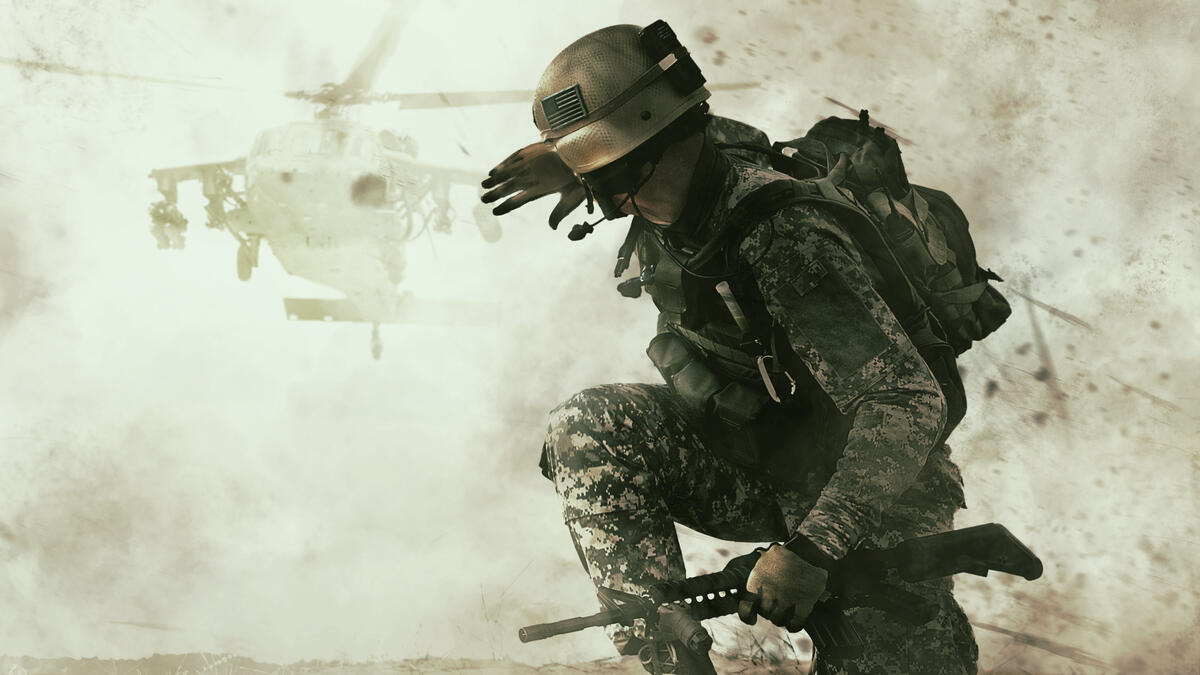Brad Allenby has collaborated on various endeavors to comprehend the broad societal impacts of our use of powerful new technologies as military weaponry. Now he has a role in an effort to probe into a more personal toll that battlefield experiences can take on the human condition.
An Arizona State University President’s Professor of civil, environmental and sustainable engineering in the Ira A. Fulton Schools of Engineering, Allenby is also a Professor of Engineering and Ethics in ASU’s Lincoln Center for Applied Ethics.
His latest books — “Weaponized Narrative: The New Battlespace, Future Conflict and Emerging Technologies” and “The Applied Ethics of Emerging Military and Security Technologies” — reflect the depth of his examinations of such topics.
He has now joined a group of colleagues to delve into a different kind of challenge stemming from an effect of warfare that has been described as “moral injury.”
Unraveling of one’s self-image

Professor Brad Allenby is a co-chair of ASU’s new Moral Injury Initiative. He joined colleagues in presenting the project’s goals at a recent conference that brought together researchers, military officials and public policy think tank leaders in Washington, D.C. Photograph courtesy of New America
Allenby is co-chair of the recently established Moral Injury Initiative, led by the Center on the Future of War, a joint venture of ASU and New America, a nonpartisan public policy think tank.
The initiative’s project focuses on the study of the long-term debilitating psychological distress resulting from trauma triggered “when one’s sense of personal honor and even identity are tainted by the extreme hostilities and atrocities of war,” Allenby explained.
“You go into the military with a particular set of ethical values, but those values can get tested and shaken” when you are caught up in prolonged, intense and chaotic battlefield environments, he said.
“When you’re in the midst of the violence and chaos of modern combat, when you have to shoot at armed children that enemy forces have recruited as fighters, these things can dramatically unravel your image of yourself as a moral person,” he said.
Beyond the studies to begin developing treatment
That condition was given its definition in the best-selling 2016 book “What Have We Done: The Moral Injury of Our Longest Wars,” authored by David Wood, who is now a Senior Fellow with the Center on the Future of War at New America.
Allenby, a U.S. Army veteran, was in Washington, D.C., in November with Wood, along with leaders of the ASU center, the think tank and military officials, chairing a conference titled “Moral Injury: Toward an International Perspective.”
The event spotlighted the release of a report with the same title, edited by Allenby and others, and provided the opportunity for a public statement about the goals of the Moral Injury Initiative, which also involves scholars and researchers at King’s College in England and the University of New South Wales in Australia.
“We want to lay the groundwork for understanding moral injury in a systematic way across different cultures and as part of a broader insight into human psychology and identity,” Allenby said.
Out of that work, the hope is to “take it beyond the studies and to generate ideas for preventing moral injury and helping the people it is impacting to overcome it,” he added.
“Brad is an exceptionally innovative, creative and interdisciplinary public intellectual. He has the ability to engage on complex issues such as moral injury with clarity, eloquence and grace,” said Daniel Rothenberg, co-director of the Center on the Future of War and a professor of practice in ASU’s School of Politics and Global Studies.
Rothenberg sees Allenby as “a consummate collaborator” who he is confident can “deftly manage a project with multiple contributors from three continents.”
Moral injury reflects broader societal pressures
Like post-traumatic stress disorder that afflicts many military-combat veterans, moral injury affects not just soldiers but their families and communities. So Allenby and his collaborators see their project as part of a broader humanitarian mission.
The issues surrounding moral injury “tie into many other things affecting our culture and our own social and political sense of identity,” Allenby said.
Moral injury “is one of many related things that are coalescing to shape us,” said Allenby, who teaches in the School of Sustainable Engineering and the Built Environment, one of the Fulton Schools.
He points out how new technologies and their increasing capabilities are altering our outlooks, behaviors and relationships to each other on a global scale, in both positive and negative ways.
From that perspective, the study of moral injury fits in with his longtime efforts to understand the social and ethical implications of our uses of science and engineering.
Today, Allenby said, our pervasive and rapidly advancing technologies — whether they are used in actual armed conflict or in cyberspace or social media — “can put us into a kind of battlespace,” where both our personal and communal identities can be challenged and sometimes undermined and even demoralized.
Technology-aided manipulation is deepening divisiveness
There is increasing evidence of this phenomenon in major recent events such as Britain’s Brexit election and the U.S. presidential election, Allenby said.
In those cases, communications technologies that make things like social media and the internet possible were used to quickly spread craftily propagandized messaging and “news”— so-called “weaponized narratives”— to carefully targeted segments of the countries’ populations.
The idea behind all of it, said Allenby, who co-chairs ASU’s Weaponized Narrative Initiative, is to deepen divisions among people by hardening their group identities against each other along political, social, racial and ethnic lines.
The nature of such manipulative technology-aided misinformation campaigns, he said, “clearly confirm that our individual identities have become a battlespace” — the battleground for modern warfare fought with words, images and perceptions.
What might be learned by an engineer and ethicist from a deep investigation into the moral injury identity crisis could shed light on how to guard against the potentially dehumanizing effects of a hypertechnologized world.
More Law, journalism and politics

Native Vote works to ensure the right to vote for Arizona's Native Americans
The Navajo Nation is in a remote area of northeastern Arizona, far away from the hustle of urban life. The 27,400-acre reservation is home to the Canyon de Chelly National Monument and…

New report documents Latinos’ critical roles in AI
According to a new report that traces the important role Latinos are playing in the growth of artificial intelligence technology across the country, Latinos are early adopters of AI.The 2024 Latino…

ASU's Carnegie-Knight News21 project examines the state of American democracy
In the latest project of Carnegie-Knight News21, a national reporting initiative and fellowship headquartered at Arizona State University’s Walter Cronkite School of Journalism and Mass Communication…
